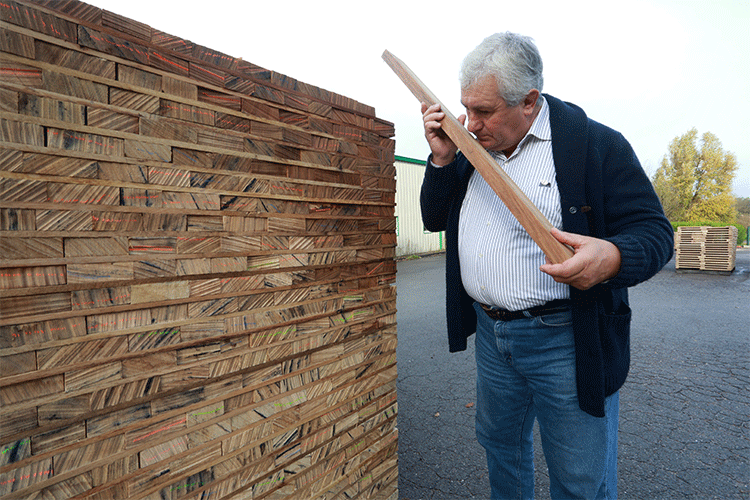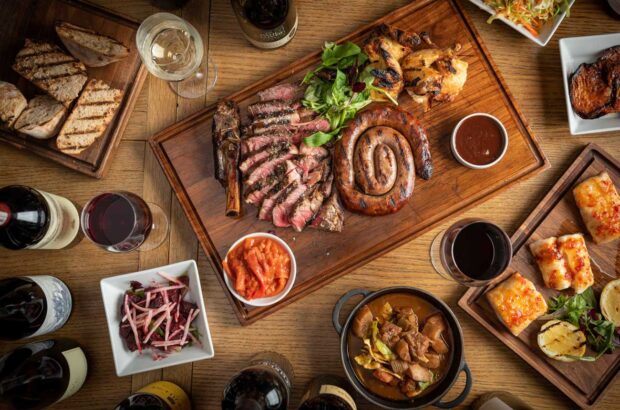Cut to the late 1980s, and Jess Jackson, founder of Kendall Jackson in 1982 and already eight years later one of the most dominant wine producers in California, is feeling sceptical about the quality of his barrels. Here's what he did next, writes Jane Anson.
Pierre Seillan: every stave matters.
Supposedly all French oak, the barrels were giving inconsistent results to Jackson’s award-winning wine, and he wasn’t sure that he could trust their sourcing.
Plenty of producers might have changed their suppliers but the late Jess Jackson, as anyone who knew him could have guessed he might, went one further. He decided to buy his own stave mill in France. That way he could be certain of the provenance of every oak tree used to make up the precious barrels that gave his chardonnay its distinctive character.
‘It wasn’t part of his core knowledge’, Nicolas Seillan – whose father Pierre began working with Jackson in 1996 – is telling me. ‘So he looked to find a partner who knew more than he did.’ The search took Jackson to the Boswell family in Missouri, long-time producers of American oak staves to supply the huge Kentucky Bourbon industry, and newer players in barrels for the American wine business. John Boswell was already a supplier to Jackson Family Wines, and the two men were personal friends.
Together they researched the right place to invest, and found a small saw mill in the Vosges mountains in eastern France, concentrating on oak for the furniture industry, with just six employees. They bought it up and turned it into a stave mill for barrels, today called Merrain International. Located in the pretty town of Monthureux-sur-Saöne, it has become one of the largest stave mills in France, producing 85,000 sets of staves per year (one barrel uses between 25 and 30 staves) and employing 150 people.
The partnership with the Boswell family halved the barrel costs for Kendall Jackson, and also helped cement the image of Jess Jackson as a visionary, something that would be underlined when he was inducted into the Vintners Hall of Fame in 2009, two years before his death aged 81.
Those who worked with Jess Jackson still wear it like a badge of honour. Nicolas Seillan describes him as his mentor, but his father Pierre sees him as something more. The two men created something extraordinary when Pierre Seillan moved to Sonoma County in 1997 to create a new range of terroir-driven wines for Jackson, first in California, then in Jackson’s existing property in Italy and finally back in France.
‘We identified the right places to grow high quality grapes,’ says Pierre, ‘then matched the terroir to the grape variety, the rootstock, the pruning choices, the vinification style, the use of oak… the idea was to make a range of micro-crus where each element would come out of specific choices made only for that site.’
And if Jess Jackson cared about the sourcing of oak, Pierre Seillan was the man who took that attitude to its logical, some might say obsessive, conclusion. Walk into the cellars at Château Lassegue in Saint Emilion, Tenuta di Arceno Arcanum in Tuscany, or at Verité in Sonoma, and the barrels are all individually named. Not with the name of the château, or the barrel makers, as you will find at most properties. Instead, they are labelled with the names of forests across France. Up to 18 different forests, assembled in the cellar, each one carefully recorded and displayed by Seillan like a Deyrolle entymologist. Darney, Jupilles, Tronçais Fontainbleu, Loches, Citeaux, Montluçon, Russy, Chanilley, Othe, Moulins… each forest might give as little as one barrel per year for the Jackson cellars, or as many as two dozen. And each year the selection process begins again.
‘Each barrel comes not only with the assurance of the forest, but with a GPS coordinate so that we know exactly where in the forest the tree stood,’ says Nicolas. ‘Even great forests can produce lower quality oak if the tree is located too near to a water source, or given too little or too much access to light. As far as I know we are the only company in France to have this level of traceability. And each barrel has one of seven different levels of toasting, each imparting different amounts of intensity and nuance to the wine’.
It’s something that is only possible when you control the supply chain in the way that Jess Jackson and John Boswell set in motion. The Boswell family also set up a cooperage in Bordeaux, Tonnellerie Quintessance, that today makes 100% of the barrels used by Pierre Seillan, with his children Nicolas and Hélène, for Jackson Family Wines in Tuscany, Saint Emilion and Sonoma.
‘From the moment I started working with Jess, we began to do tests from different forests and different levels of toasting,’ Pierre tells me in his heavy Gascon accent, undimmed by 20 years of Californian sunshine. ‘After 10 years, we decided to abandon all our existing coopers and do it 100% ourselves. Select the forest, attend the government-run auctions that select the trees to be felled, work with Quintessence to develop an array of toasts depending on grape, soil and vintage.’
Jackson clearly found in Seillan a man who shared his obsession with detail. But Seillan is above all else his own man – something that must have appealed to Jackson just as much as his skill in the vines and cellars. It makes me warm to him hugely as we sit tasting through the frankly brilliant range of wines, and one thing proves it above all else. Seillan took his first steps as a winemaker at his family’s property in the unpretentious Côtes de Gascogne appellation. He has fully taken over the property, now called Bellevue Seillan, since 2011, making a merlot, cabernet sauvignon and malbec blend under his own name, not that of the Jackson family. The resulting wine is aged in concrete and stainless steel. It uses zero oak.
‘You have to know when to use oak, and when to stop,’ Seillan says with a broad smile. ‘Even in Saint Emilion and Sonoma we only use around 50% new oak, and do all vinification in stainless steel. We want the architecture and complexity of oak without it being dominant. It is terrible to see the best oaks cut down without truly respecting them, so we take their use very seriously. We have sustainable forests in France, and frankly the state forests are the only good part of French government influence, but the fact remains that the best way to honour the forests is to know when to leave them alone.’
Written by Jane Anson







